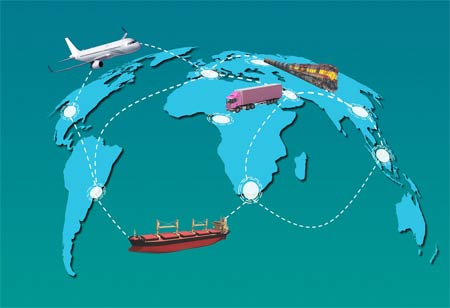THANK YOU FOR SUBSCRIBING
THANK YOU FOR SUBSCRIBING

By
Logistics Transportation Review | Wednesday, September 18, 2024
Stay ahead of the industry with exclusive feature stories on the top companies, expert insights and the latest news delivered straight to your inbox. Subscribe today.
Turnaround strategies help trucking companies regain profitability through operational changes, cost-cutting and efficiency improvements, funded through loans, investments, or government support.
FREMONT CA: Turnaround strategies are essential for trucking companies grappling with financial instability, operational inefficiencies, or competitive pressures. These strategies are designed to realign a company's operations, optimise resources and reestablish profitability. They often involve comprehensive assessments of existing practices, restructuring of management and operations and implementing new technologies or processes. However, executing these strategies requires significant capital. Funding options include securing loans, attracting investors, or leveraging government grants and subsidies. By carefully navigating these strategies and funding avenues, trucking companies can revitalise their operations, improve performance and position themselves for long-term success in a dynamic industry.
The Four Stages of a Turnaround Strategy
A turnaround strategy aims to halt a company's decline and restore its financial health. Through careful assessment and developing and implementing a strategic plan, organisations can improve their ability to navigate challenges and prepare for future growth. The process can be divided into four distinct stages:
Stage 1 – Assessment and Diagnosis
The first stage involves thoroughly assessing and diagnosing the business's current situation. Although this step may appear harsh, it is crucial for ensuring the success of the turnaround strategy. Internal audits are conducted to evaluate operational efficiencies, identify underlying problems and uncover the root causes of the company's difficulties. This comprehensive evaluation allows for a clear understanding of the issues that must be addressed.
Stage 2 – Strategy and Planning
A turnaround strategy will be developed once the core issues have been identified. This plan should outline necessary changes in business operations, include cost-saving measures, propose new initiatives for acquiring revenue streams and provide a realistic financial plan to support the restructuring process. The strategy must be detailed and actionable to effectively guide the company toward recovery.
Stage 3 – Execution and Implementation
With the strategy in place, the focus shifts to its execution and implementation. Progress should be monitored regularly, with adjustments made to ensure the strategy remains on track. This stage may involve ongoing competitive research to understand how other companies in the industry acquire contracts and market share and continuously monitor internal operations. The objective is to ensure that the strategic actions lead to the desired outcomes.
Stage 4 – Stabilisation and Growth
The final stage aims to stabilise the business while preserving its value. At this point, the changes implemented during the turnaround must be institutionalised to prevent similar issues from arising in the future. Emphasising key financial metrics, such as profitability, return on investment (ROI) and return on assets employed, can help maintain stability. Additionally, establishing continuous management and employee development programs is essential for enhancing in-house capabilities and mitigating the risk of future downturns.
Funding a turnaround strategy can be challenging when cash flow problems and limited working capital have contributed to the current situation. However, alternative lenders specialising in transportation offer financing solutions to address these issues by improving cash flow and providing access to additional capital. Freight factoring is ideal for bridging funding gaps and ensuring timely payments to drivers and staff, fueling trucks and settling bills. By converting freight bills due in 30 or 60 days into immediate cash, freight factoring allows for selling invoice receivables at a discount, resulting in fast funding, reliable cash flow and streamlined administration through professional accounts receivable management.
Equipment refinancing offers a practical option for cases requiring a more substantial cash injection. This asset-based lending converts long-term assets, such as fleet equipment, into cash, allowing companies to monetise the equity in their rolling equipment. Leading lenders in the industry provide high valuations on equipment, advances up to 75 per cent of Net Orderly Liquidation Value (NOLV), minimal restrictions and limited loan covenants. Businesses can unlock hidden value by leveraging accounts receivable and fleet equipment—often underutilised assets for financing. Qualification for these alternative financing options is straightforward, with asset value assessments, financing approval and initial funding typically completed within days. Successfully navigating a turnaround's strategic and financial aspects can transform challenges into opportunities, enabling trucking companies to adapt to market demands, improve their competitive edge and achieve growth in an evolving industry landscape.
I agree We use cookies on this website to enhance your user experience. By clicking any link on this page you are giving your consent for us to set cookies. More info





